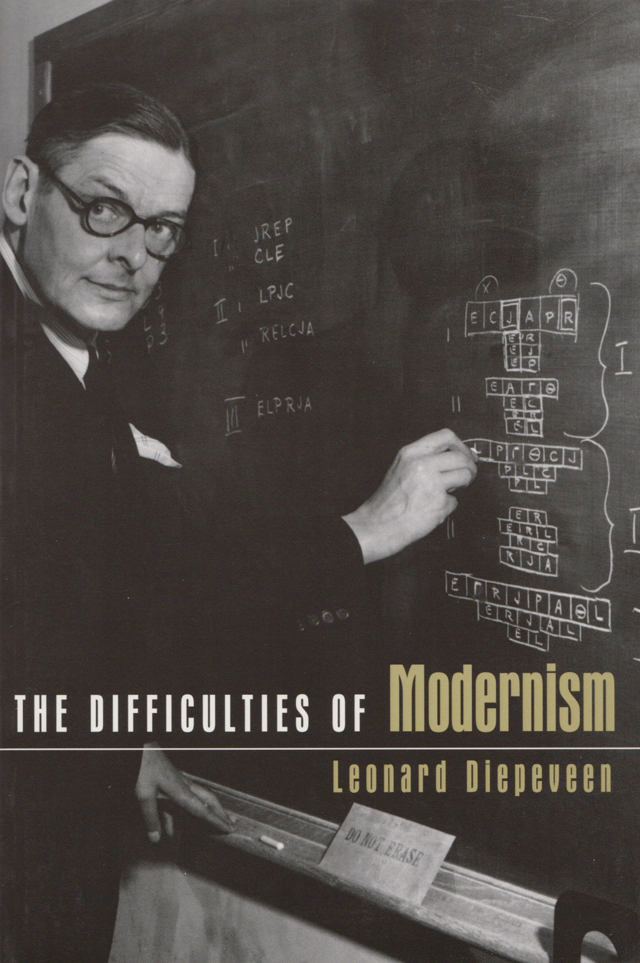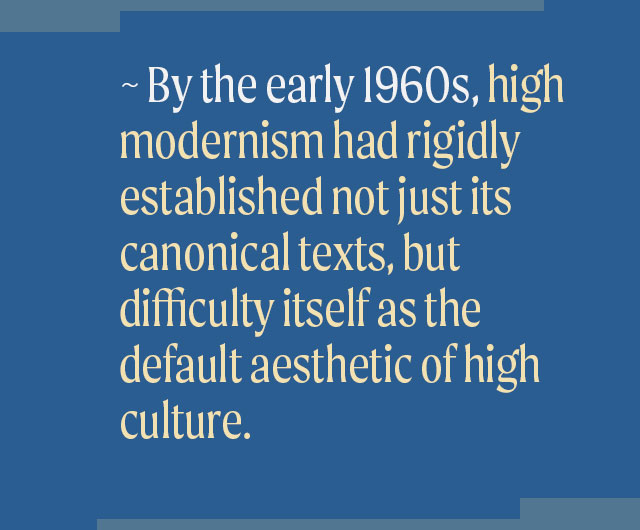

The Difficulties of Modernism. New York: Routledge, 2003.
The Difficulties of Modernism analyzes the work performed by the most commonly noted feature of high modernism: its difficulty. Beginning with a look at the commonplace that in the first decades of the last century difficulty was, as one reader grumbled, “running rampant in literature,” this book examines how difficulty circulated in modern culture. It considers the social and conceptual function of the highly charged reactions against high modernism, from the laughter, to the parodies, to the anger, to the charges that difficult modernism was a hoax.
The Difficulties of Modernism argues that in the face of this resistance difficult modernism was a robust and powerful aesthetic, both in its changing how aesthetic culture typically understood pleasure, and its almost effortless exclusion of texts that did not exploit difficulty’s aesthetic. Difficulty allowed modernism to rise, and it was central to how modernism shaped the canon not only of twentieth-century literature, but of the literature and art that preceded and followed it. And it was more than that: with difficulty at its center, modernism reconfigured the interaction between high art and its public: modernism is the moment when knowing how to maneuver through difficult art became the central sign of one’s ability to participate in high culture. This reconfiguration continues to shape high culture.